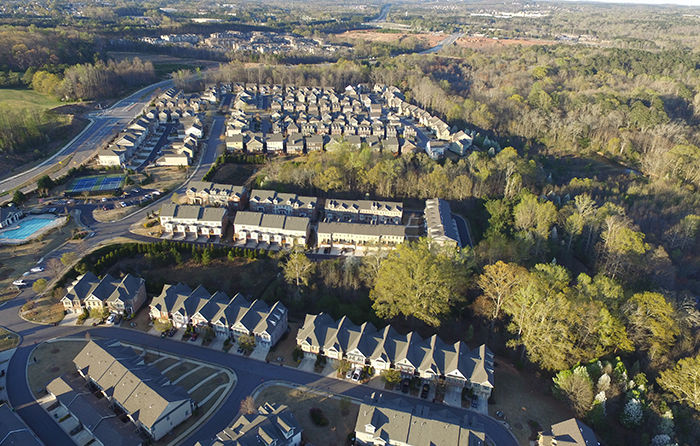Nitra-Seal Ensures Long Term Vapor Intrusion Protection for Quick Service Restaurant
Case study highlights:
- Quick service retail restaurant required an effective preemptive vapor mitigation solution to protect future employees and customers from potential vapor intrusion risks
- The project development team determined Nitra-Seal was the safest, most expedient and cost-effective vapor barrier system to install on this site
- Land Science Certified Applicator S&H Waterproofing and Construction, installed Nitra-Seal and performed smoke testing as part of the quality control process to confirm proper installation of the barrier.
This project development site is a newly opened quick-service restaurant in Conyers, Georgia. Offsite chemical spills from historical operations had resulted in low-level volatile organic compounds (VOCs) released to the subsurface, creating a potential for vapors to intrude into new buildings constructed in the affected area. Recognizing the risk and placing emphasis on future workers’ safety, the forward-thinking client decided that a preemptive measure be instituted, requiring the installation of a vapor mitigation system as part of the construction specification.
Nitra-Seal Specified to Mitigate VOCs for Urban Atlanta Townhome Development
Case study highlights:
- Nitra-Seal protects future residents of new urban townhomes
- Total Vapor Solutions selected Nitra-Seal and TerraVent for this site after soil and gas samples revealed the need for a vapor intrusion mitigation system.
- It was determined that Nitra-Seal should be laid across every foundation, but ventilation needs were not uniform for all the buildings.
A leading national builder of luxury homes recently acquired a brownfield site in Midtown Atlanta with plans to develop a large-scale multi-phase townhome project. The developer planned to construct nine individual buildings on the site, each ranging from 4,000 to 6,000 square feet, with multiple townhouse units inside. Slab-on-grade foundations were set, but construction could not continue without understanding each building’s vapor intrusion risks and creating a plan to provide reliable protection for future residents.

 Americas
Americas Europe
Europe Français
Français Deutsch
Deutsch Italiano
Italiano Español
Español





